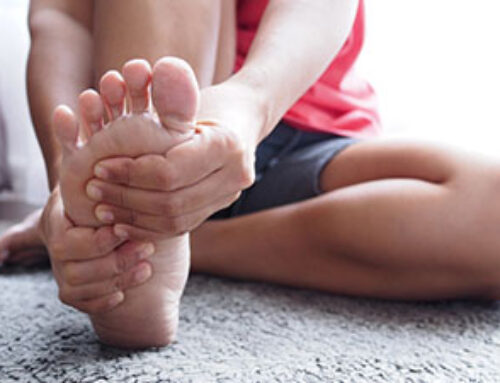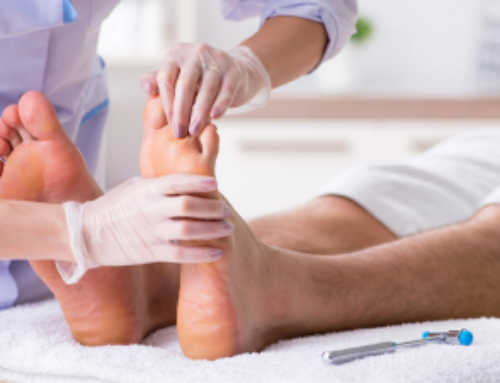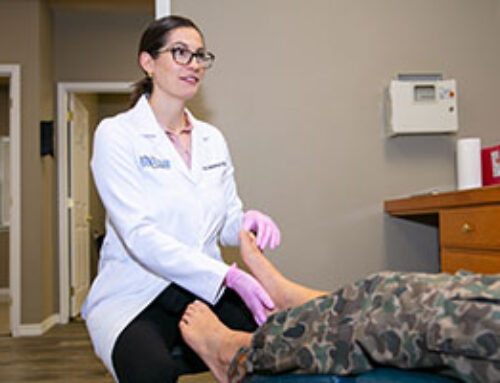We put a lot of stress on our feet. As a result, arch pain is among the most common conditions podiatrists treat. The arch runs along the bottom of the foot, from the heel to the base of the toes. It supports the weight of our body and acts as a shock absorber when we walk, run, or jump.
Depending on the underlying cause of your arch pain—whether you have an injury or a structural problem—it may extend to your heel or to the ball of your foot. Finding out what may be causing the pain is the first step toward relieving your discomfort.
Common causes of arch pain
Runners and athletes have a high risk of developing arch pain. However, aging and excess weight can also result in arch pain that may radiate to the top of your foot or ankle and could also affect your knees, hips, or back. The pain may be more intense when you first get out of bed and worsen when you walk, stand for long periods of time, or engage in physical activity.
A number of conditions can cause pain in the arch of the foot.
Plantar fasciitis is the most common cause of arch pain
The plantar fascia is a thick band of tissue that runs along the bottom of your foot, from the back of your heel to the ball. When the tissue becomes inflamed or swollen, the condition is called plantar fasciitis (PLAN·taar fa·shee·AI·tuhs).
Symptoms of plantar fasciitis include a stinging pain in the arch of your foot or heel, along with a tight Achilles tendon. The pain may be worse when you first get out of bed or after you sit for a long time. Extended periods of standing can also trigger pain. Fortunately, it usually goes away once you take weight off the foot.
Risk factors for plantar fasciitis
Walking barefoot or wearing shoes that offer poor arch support can increase your risk of developing plantar fasciitis. Other risk factors include:
- Age. As we grow older, the tissue at the bottom of our feet becomes less elastic and we’re more likely to develop the condition, which is most common in people age 40 – 60.
- Exercise. Over time, long-distance running, dancing, basketball, or other physical activities that put repetitive stress on the tissue can lead to inflammation and swelling that causes arch pain. Poor flexibility in the calf muscle and sports injuries are other common causes of the condition.
- Gait. An atypical pattern of walking can affect the way your weight is distributed and stress the tissue. Check your shoes for signs of an uneven gait. If your soles tend to break down the inner or outer side, you may have a higher risk of developing plantar fasciitis.
- Being overweight. Excess pounds put added stress on the arches of your feet.
- Occupation. Anyone who spends a lot of time walking or standing on hard surfaces can be at increased risk of developing the condition.
While plantar fasciitis is quite common, structural problems like flat feet and abnormal pronation can also cause pain in the arch of the foot.
Complications of flat feet and fallen arches
Flat feet is a condition in which the arch of the foot never fully develops. Adults can also experience fallen arches—a condition called adult-acquired flatfoot—due to injury, overuse, or excess body weight. People with flat feet often experience pain in the heel or ball of the foot, especially after physical activity. At the same time, those with very high arches may also suffer from foot pain.
A condition called posterior tibial tendon dysfunction (PTTD) is the most common form of adult-acquired flatfoot. When the tendon becomes injured or inflamed, you may feel pain that extends along the back of the calf, and your ankle may become swollen. Podiatrists treat PTTD with ankle braces, custom shoe inserts, and physical therapy.
The link between abnormal pronation and foot pain
Pronation refers to the natural movement of your foot as you walk or run. With proper pronation, the foot and ankle absorb shock and keep your ankles and knees aligned. When you walk, if your foot rolls too far to the inside or outside, it can alter the biomechanics of your foot and cause arch pain.
Overpronation occurs when the outer edge of the heel hits the ground first, before the foot rolls inward onto the arch. Over time, this flattens the foot and can damage muscles, tendons, and ligaments, which can lead to arch pain. If you overpronate, you may notice extra wear on the inside of the sole of your shoe, near the heel and ball of your foot.
Supination (or underpronation) occurs when the foot rolls to the outside edge and is more common in people with high arch feet.
A podiatrist can analyze each element of your gait to assess how the biomechanics of your foot may be causing you pain.
Home remedies for arch pain
When you first notice arch pain, take a break from activity that puts stress on your feet, and avoid walking barefoot or wearing unsupportive shoes, like flip-flops. Use ice packs for about 20 minutes, three times a day, to reduce pain and swelling in the heel and arch of your foot.
Over-the-counter pain relievers or nonsteroidal anti-inflammatory drugs (NSAIDs), such as ibuprofen, may also help reduce inflammation and pain. Be sure to check with your doctor or pharmacist to make sure pain relievers won’t have adverse reactions with other medications you take.
When to see a doctor for arch pain
If your arch pain doesn’t improve after a few days—or if it gets worse—it may be a sign of a more serious condition. Left untreated, the condition could lead to chronic pain that interferes with day-to-day activities and may change the way you walk, resulting in foot, knee, hip, or back problems.
Plantar fasciitis is of particular concern because over time the tissue may tear partially away from the heel and the resulting void will fill with calcium, a condition called a heel spur.
To find out what’s causing your foot or arch pain, schedule an appointment today at one of our five convenient locations. Our podiatrists will conduct a comprehensive exam to identify the underlying cause of your pain so we can provide the most effective treatment, including custom orthotics, EPAT therapy, surgical treatments, and more.
Subscribe to stay up-to-date on news and tips from us.





